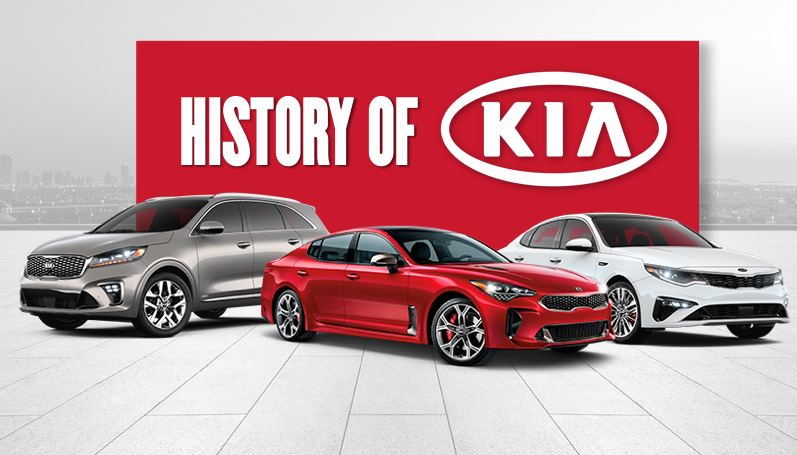When Did Kia Come To America

Determining the exact moment a car brand "arrives" in a market isn't as simple as pointing to the first dealership opening. It's a complex interplay of strategic planning, regulatory compliance, and building consumer confidence. For Kia's entry into the American automotive landscape, we need to look beyond just the sales date and delve into the preceding groundwork.
Kia's American Genesis: Beyond the First Sale
The commonly cited date for Kia's American debut is 1994, when the first Kia Sephias were sold in a limited number of dealerships. However, the real story begins much earlier. Think of it like building a bridge: you don't just start laying asphalt; you need to survey the land, design the structure, secure funding, and build the foundation. Kia's entry was similar. The 1994 sales were simply the "asphalt" being laid on a foundation built over several preceding years.
Before any cars could be sold, Kia needed to:
- Establish a North American subsidiary, Kia Motors America.
- Meet stringent US safety and emissions regulations.
- Develop a dealer network capable of servicing and supporting their vehicles.
- Conduct market research to understand American consumer preferences.
These preparatory steps are often overlooked, but they're crucial in understanding the totality of Kia's arrival. Imagine you're launching a new app. You wouldn't just upload it to the app store without testing it, creating marketing materials, and setting up customer support. Kia's approach was equally comprehensive.
The Sephia: A Humble Beginning
The Kia Sephia, a compact sedan based on a Mazda platform, was the spearhead of Kia's initial assault on the American market. It was a value-oriented car, positioned to appeal to budget-conscious buyers. This was a deliberate strategy. Kia recognized they couldn't compete head-to-head with established brands like Toyota and Honda on brand recognition or reputation. Instead, they focused on offering a reliable, affordable alternative.
Mechanically, the Sephia wasn't groundbreaking. It featured a 1.6-liter inline-four engine, MacPherson strut front suspension, and a beam axle rear suspension. These were common components for the time, prioritizing simplicity and cost-effectiveness. While it lacked the sophistication of more expensive rivals, its straightforward design made it relatively easy to maintain and repair, a key selling point for budget-minded consumers.
The Sportage: Entering the SUV Craze
Shortly after the Sephia, Kia introduced the Sportage, a compact SUV. This was a smart move, aligning with the growing popularity of SUVs in the mid-1990s. The Sportage offered four-wheel-drive capability and a higher ride height, appealing to buyers seeking a more versatile vehicle. Like the Sephia, it was priced competitively, making it an attractive option for those entering the SUV market for the first time.
Pros and Cons of Kia's Initial Strategy
Kia's initial approach, focusing on value and affordability, had both advantages and disadvantages:
Pros:
- Price Competitiveness: Kia undercut established brands, attracting buyers who were primarily concerned with price.
- Simple Mechanics: The straightforward engineering made the cars easier and cheaper to repair.
- Rapid Market Entry: By focusing on value, Kia could quickly establish a presence in the American market.
Cons:
- Reputation: Kia initially suffered from a reputation for poor quality and reliability.
- Brand Image: The focus on affordability meant that Kia struggled to cultivate a premium brand image.
- Limited Technology: The emphasis on cost-effectiveness meant that Kia's early models lacked advanced features and technology.
Kia's Transformation: From Budget Brand to Global Player
The early years were a learning experience for Kia. They faced challenges with quality and reliability, issues that plagued many new automakers entering the US market. However, Kia learned from these mistakes and embarked on a long-term strategy to improve its products and build a stronger brand. This involved significant investments in research and development, design, and manufacturing. They hired talented engineers and designers, focusing on improving quality, performance, and styling.
A turning point was the introduction of the 10-year/100,000-mile powertrain warranty. This bold move signaled Kia's confidence in the reliability of its vehicles and provided a powerful incentive for hesitant buyers. It was a calculated risk, but it paid off handsomely, helping to change perceptions of the Kia brand.
Manufacturer Examples: Key Models in Kia's Evolution
Several models have been instrumental in Kia's transformation:
- Kia Optima: This mid-size sedan, particularly the models from the late 2000s onwards, showcased Kia's improved design and quality.
- Kia Sorento: This SUV demonstrated Kia's ability to compete in a more competitive segment with a well-equipped and stylish vehicle.
- Kia Telluride: This larger SUV became a critical success, garnering numerous awards and solidifying Kia's position as a mainstream automaker.
- Kia EV6: A fully electric vehicle that highlights Kia's innovation and commitment to the future of electric mobility.
Real-World Insights and Recommendations
Looking back, Kia's arrival in America was a marathon, not a sprint. They didn't burst onto the scene as a dominant force but rather built their reputation gradually over time. Their early models provided a stepping stone to later successes. Here are a few key insights:
- Persistence Pays Off: Kia's success is a testament to the importance of long-term planning and continuous improvement.
- Value Proposition Matters: Even in a competitive market, offering a compelling value proposition can attract buyers.
- Quality is Paramount: Ultimately, building a strong brand requires delivering reliable and high-quality products.
Today, Kia is a far cry from the budget brand that arrived in America in 1994. It's a global automaker with a diverse lineup of vehicles that compete with the best in the industry. While 1994 marks the first sales, the true "arrival" is an ongoing process, reflecting continuous innovation and a commitment to exceeding customer expectations. Consumers considering a Kia today benefit from decades of learning and development, resulting in vehicles that offer a compelling blend of value, style, and performance.
